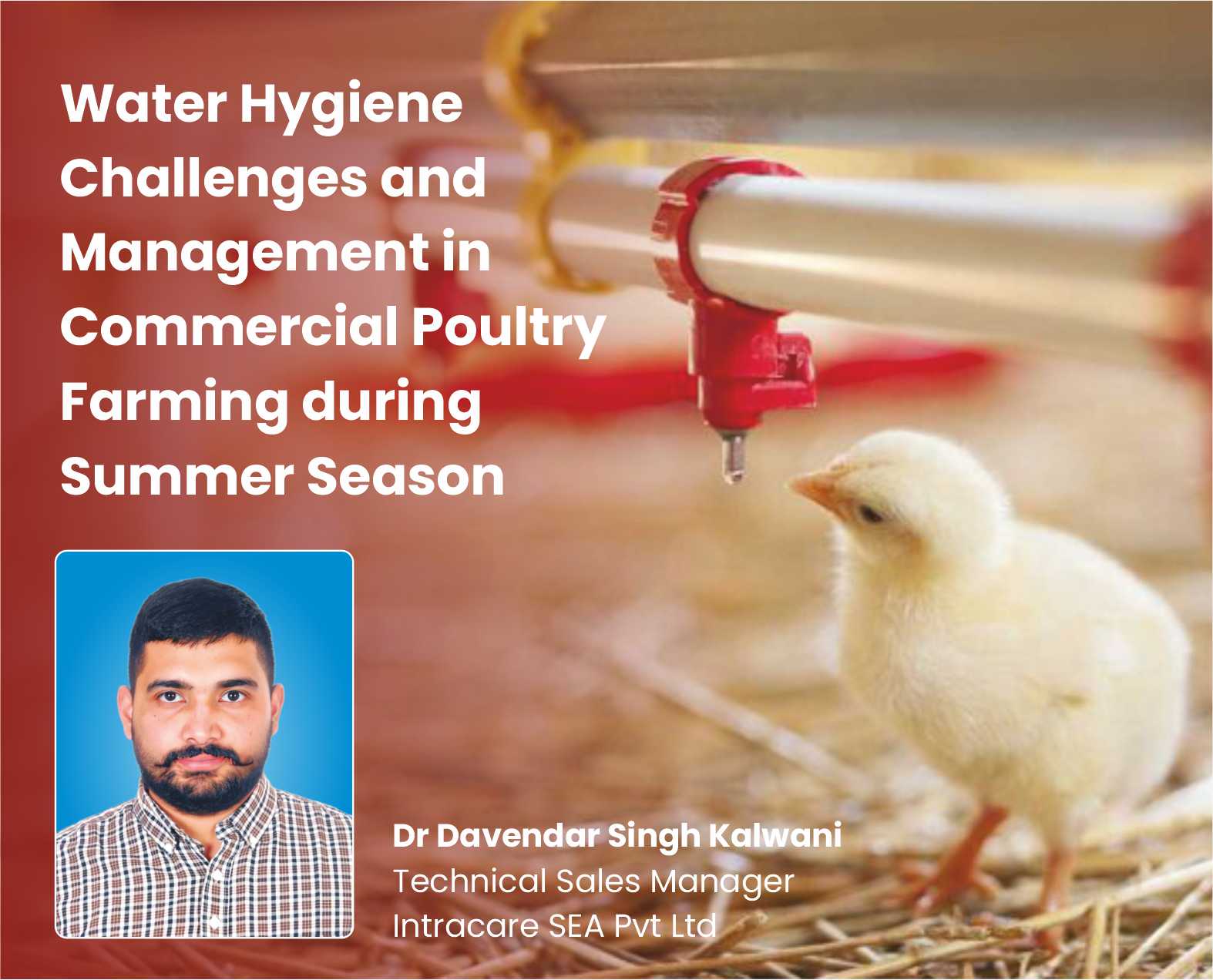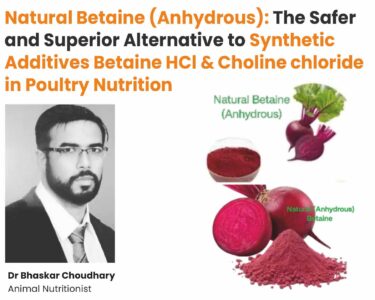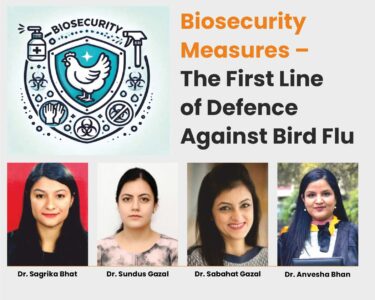Water Hygiene Challenges and Management in Commercial Poultry Farming during Summer Season
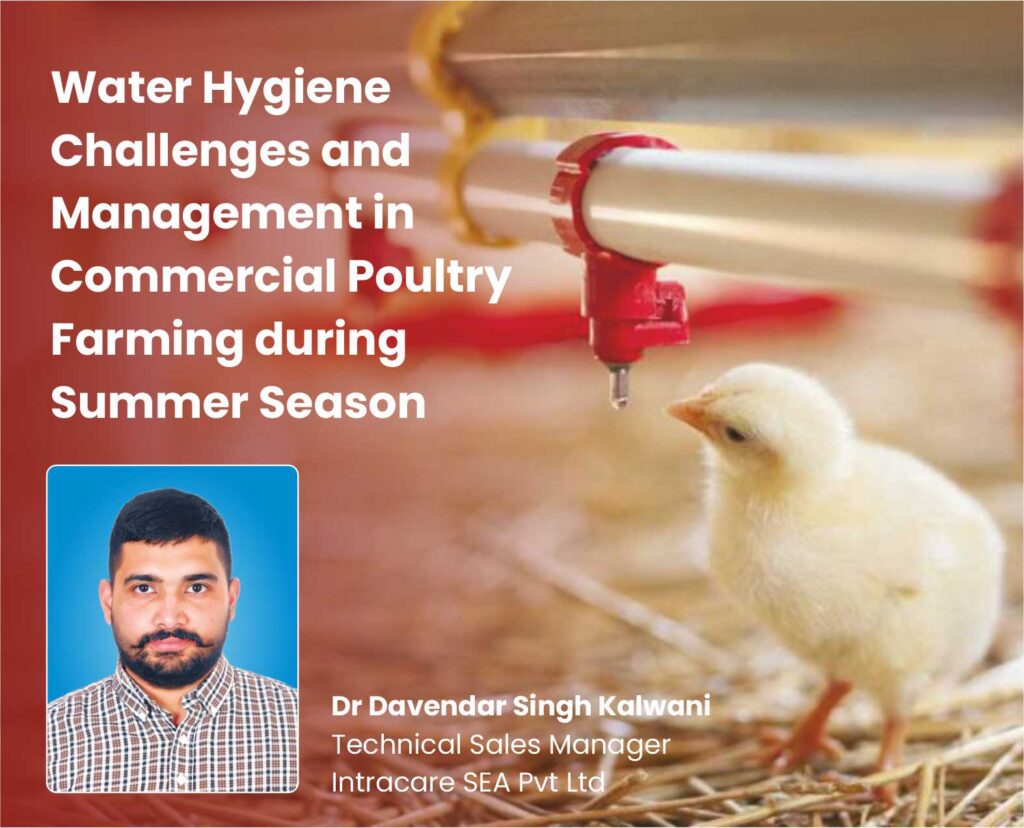
Dr Davendar Singh Kalwani, Technical Sales Manager, Intracare SEA Pvt Ltd
Introduction:
Summer season brings with it extreme challenges for the poultry industry. Among all the prevailing issues, water hygiene remains the top priority, as far as poultry production is concerned. Quality of water will in general, have a direct bearing on poultry’s health and production. Good quality water is important for poultry’s growth, reproductive performance, and general well-being. The prevailing high temperatures coupled with an increased microbial activity during the summers obviously make it tough to maintain the desirable standards of water hygiene. This article attempts to understand the risks involved and the strategies to manage the water hygiene in this summer in a better way. The article also tries to identify the factors contributing to waterborne microbial contamination and understand the impacts of water contamination on poultry health and welfare. Awareness of the peculiar dynamics of summer management, in terms of water hygiene, can help farmers in preventing some of the losses that are usually suffered by them during the summer and throughout the year.
Impact of summer season on water quality:
During summer, various environmental factors can affect the quality of water. The rise in temperature of water is the most important factor. As the water temperature increases, it creates optimal conditions for microbial growth. Mesophilic bacteria including major pathogens proliferate rapidly in such conditions, hence increasing the risk of water contamination in poultry production. These microbes might lead to severe illnesses and reduced performance in terms of growth and reproduction.
Moreover, the elevated water temperature accelerates the decomposition of organic matter which serves as a nutrient source for various microorganisms. Due to this rapid decomposition in warmer temperatures, the level of nutrients, such as nitrogen and phosphorus in water increases along with release of dissolved solids which further alters the water composition negatively.
Additionally, this can fuel the algal bloom in underground water reservoirs. Some species of algae produce toxins that are harmful to both animals and humans if ingested. Also, as algae die and decomposes it hastens the degradation of water quality.
In addition to microbial contamination and algal blooms, summer conditions can also aggravate other water quality issues in poultry operations. Reduced rainfall and drought conditions in certain regions can result in lower water levels in reservoirs and water bodies. Lower water levels concentrate pollutants, such as nutrients, chemicals, and sediment, leading to higher concentrations in the remaining water. This can further degrade water quality and increase the risk of contamination for poultry.
Biofilm as a hidden threat:
Formation of biofilm during summer is another crucial aspect involved in degrading water quality particularly in water pipelines. Biofilms is a slimy layer consisting of complex communities of microbes that attach to surfaces of water pipes, tanks, and drinkers. Warm climate can enhance the growth and proliferation of various bacteria, easing the formation of such biofilms. These biofilms pose several challenges to the quality of water and poultry health. It provides protection for microbes inside it by shielding them from disinfectants and making them more resistant to removal, this allows pathogens to persist in the water systems for long durations making itself a source of infection.
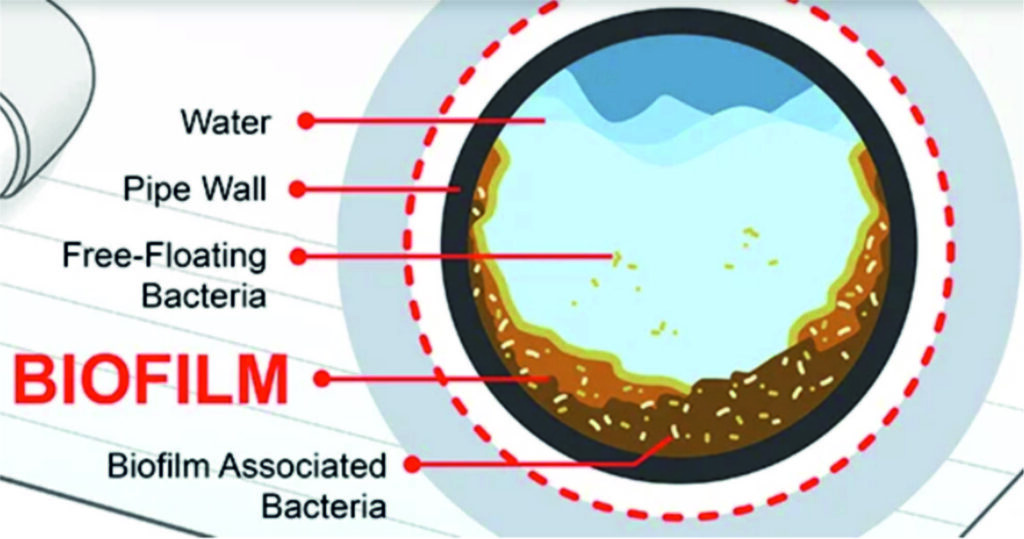
Biofilms can also cause deterioration of water infrastructure; its accumulation might lead to corrosion of pipes and fittings which can compromise the integrity of water distribution system. Additionally, it can cause blockages and reduce the flow of water and thus affecting water flow to drinkers which can lead to dehydration in birds.
Furthermore, biofilms act as a reservoir for pathogens, releasing them into the water intermittently and perpetuating the cycle of contamination. This can pose a continuous threat to poultry health, increasing the likelihood of disease outbreaks and impacting the overall productivity of the operation.
Effects of poor water quality on poultry production:
1. Biofilm inside water pipeline may reduce intake, causing dehydration and poor growth.
2. Biofilms can release pathogens, affecting bird health and productivity.
3. Contaminants may lead to digestive issues, diarrhoea, and poor growth.
4. Poor quality of water can affect egg quality resulting in thin shelled eggs and reduced hatchability in fertile eggs.
5. Stress from poor water quality drops reproductive performance in poultry flocks.
6. Mortality rates can increase due to stress, dehydration, and disease susceptibility.
7. Water contaminants compromise vaccine efficacy, leaving birds vulnerable to infections.
8. It might worsen the effect of concurrent viral or any other diseases.
9. Clogged delivery systems can hamper vaccine administration, risking inadequate immunity in poultry.
10. It can increase the chances of vertical transmission of bacterial diseases in progeny.
Management Strategies for Summer Water Hygiene:
Following strategies may be followed to ensure quality drinking water to poultry birds:
1. Regularly clean the water sources, pipes, and drinkers to prevent biofilm and pathogen buildup.
2. Test the water quality regularly for pH, TDS, and microbial contamination.
3. Use of good quality water disinfectant and sanitizers and follow manufacturer guidelines.
4. Control water temperature to prevent microbial growth.
5. Minimize water wastage by fixing leaks and optimizing delivery systems.
6. Educate farm staff on water hygiene.
7. Maintain records of cleaning schedules and water quality tests.
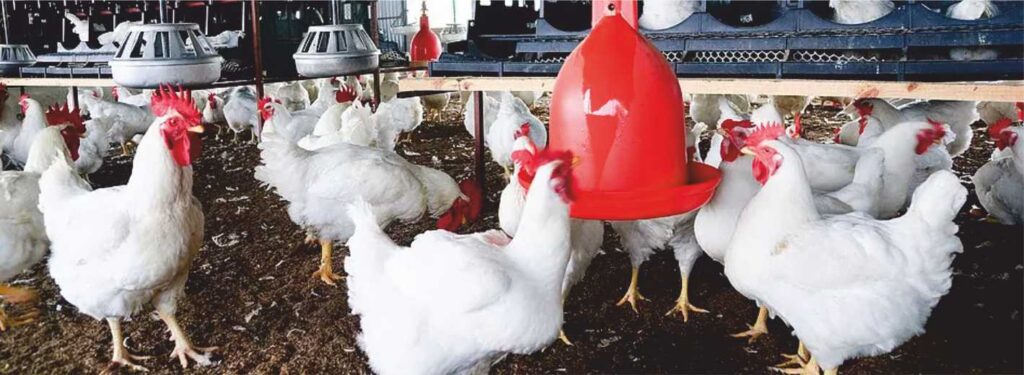
Ensuring water quality at poultry farms:
Along with all the management strategies, the most crucial step is pipeline cleaning and water sanitation. There are many chemical agents available for the same purpose. Choosing the best water sanitizer and cleaning agent should be based on several characteristics.
When it comes to pipeline cleaning methods, the following characteristics are desirable:
1. Efficiency: The cleaning method should effectively remove biofilms, mineral deposits, sediment, and other contaminants from water pipelines to maintain optimal water quality and flow rates.
2. Non-Corrosive: Cleaning agents or procedures should not corrode or damage pipeline materials, ensuring the longevity and integrity of the water distribution system.
3. Accessibility: Pipeline cleaning methods should be accessible and practical for poultry producers, whether through manual cleaning procedures or automated cleaning systems.
4. Frequency: The cleaning frequency should be appropriate to prevent biofilm formation and ensure consistent water quality for poultry health and performance.
5. Validation: Cleaning procedures should be validated to confirm their effectiveness in removing contaminants and maintaining water sanitation standards.
When considering water sanitizers for poultry operations, several characteristics are essential to ensure effective and safe water management:
1. Broad-Spectrum Activity: An ideal water sanitizer should have broad-spectrum activity against a wide range of bacteria, viruses, fungi, and other pathogens commonly found in poultry drinking water. This ensures comprehensive protection against disease-causing organisms.
2. Non-Toxic and Safe: The sanitizer should be non-toxic to poultry and humans when used at recommended concentrations. It should not leave harmful residues that could affect bird health or compromise food safety.
3. Residue-Free: After application, the sanitizer should degrade into non-toxic by-products or dissipate without leaving any harmful residues in the water or water distribution system.
4. Stability: The sanitizer should remain stable under varying environmental conditions, including temperature fluctuations and water pH levels, to maintain its effectiveness over time.
5. Compatibility: It should be compatible with commonly used materials in poultry water systems, such as PVC, polyethylene, and stainless steel, to prevent corrosion or damage to pipelines and water equipment.
6. Ease of Application: The sanitizer should be easy to apply and should not require complex equipment or procedures for effective use. This ensures practicality and efficiency in poultry farm operations.
7. Regulatory Compliance: The sanitizer should comply with regulatory standards and guidelines set forth by relevant authorities, ensuring its safety and efficacy for use in poultry production.
8. Environmental Impact: Consideration should be given to the environmental impact of the sanitizer, including its biodegradability and potential effects on water quality in surrounding ecosystems.
Based on these characteristics, selecting a suitable option is very perplexing. In general, quaternary ammonium salts (commonly called quats) and hydrogen peroxide fulfil almost all the requirements but they have some drawbacks as well. Hydrogen peroxide is an unstable compound and loses its efficacy in very short period making it difficult to get uniform results across pipeline. Quats are effective for water sanitation, but they have limited action on biofilms particularly mature ones. However, 50% stabilized hydrogen peroxide is an excellent choice as it easily overcomes the above problems. Its broad-spectrum effectiveness, safety, non-corrosive properties, long shelf-life, and environmental compatibility make it an indispensable tool in safeguarding the health and profitability of poultry flocks, particularly in the challenging conditions of the summer season.
Conclusion
In conclusion, managing water hygiene effectively is among top priority for commercial poultry farmers, especially during the challenging conditions of summer. Summer’s heat and increased microbial activity threaten water quality. Regular cleaning, disinfection, temperature control, and water testing can help combat these threats successfully. Minimizing water wastage waste, staff training, and record-keeping further strengthen water hygiene plans. By proactively managing water, poultry farmers ensure the long-term health and profitability of their flocks.


